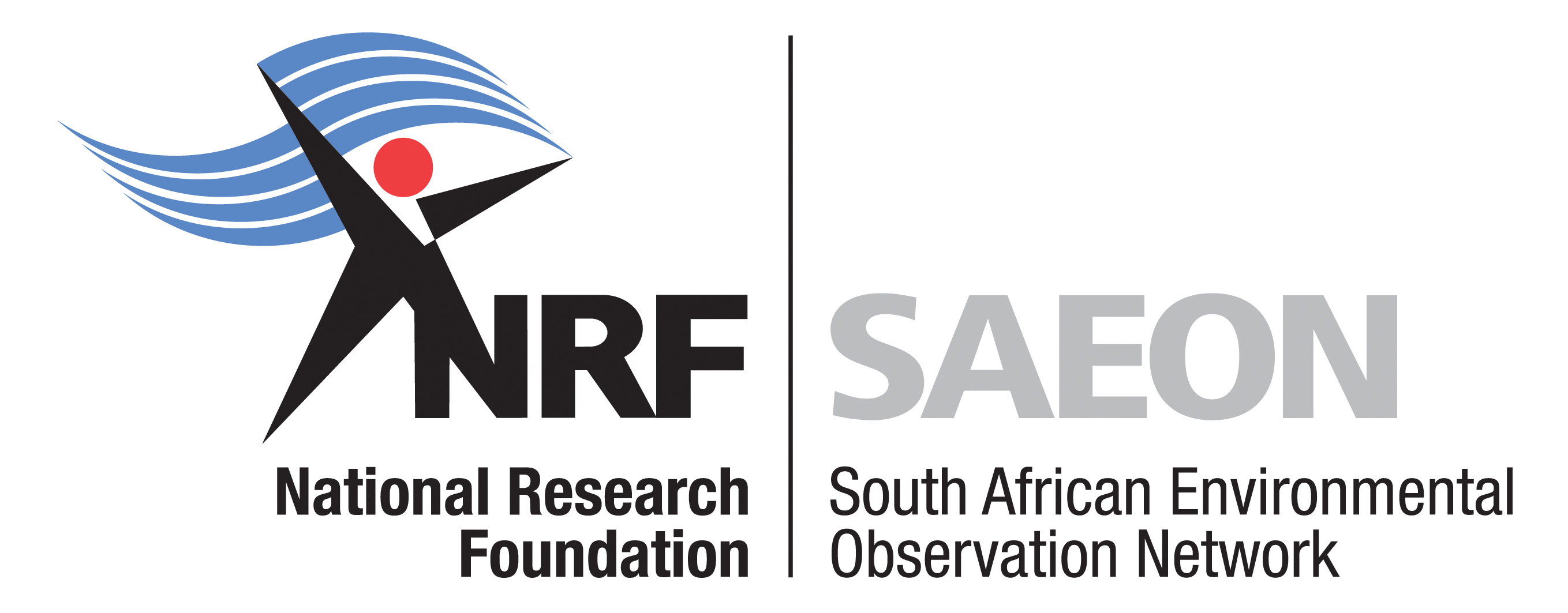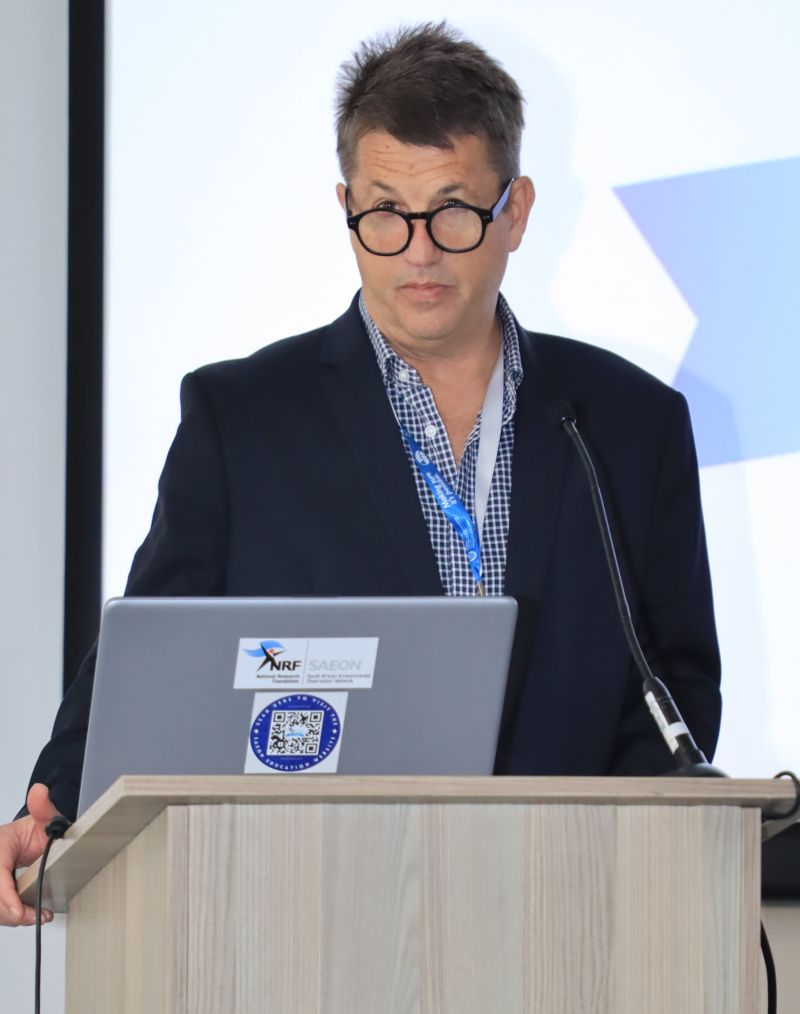eNews
#04 2023
Celebrating 21 years of world-class environmental research platforms for a sustainable society
By Rabia Mathakutha, Research Coordinator: South African Polar Research Infrastructure*
In an era where environmental degradation, climate change and socio-economic hardships pose significant challenges to society, organisations striving for sustainable solutions play a crucial role. One such organisation is SAEON, which is funded by the Department of Science and Innovation (DSI) and managed by the National Research Foundation (NRF).
Established in the early 2000s, SAEON recently celebrated its 21st birthday with a prestigious event. Entailing a reflection of past accomplishments and an optimistic vision for the future, the celebration highlighted NRF-SAEON’s significant contributions towards advancing knowledge, and inspiring and transforming lives through its world-class environmental research platforms.
The event
The anniversary event was held on 7 September at the Two Oceans Aquarium in the Victoria & Albert Waterfront, Cape Town. The event consisted of a series of keynote addresses and exhibitions aimed at raising awareness and generating support for the organisation’s ongoing initiatives.
The celebration was attended by SAEON staff, honorary guests including the NRF CEO, Prof Fulufhelo Nelwamondo, NRF-SAEON managing director, Dr Mary-Jane Bopape, Mr Johan Pauw –former founding managing director at SAEON (now retired), and representatives from the DSI and the Department of Forestry, Fisheries and the Environment (DFFE). In addition, prominent environmentalists, environmental science researchers, early career professionals and journalists were in attendance.
Significantly, members of traditional leadership were also represented, including the honourable Inkosi K.T.H. Nxumalo, King of the Mabasa Traditional Authority, who is hosting one of SAEON’s research infrastructure (EFTEON) landscapes, signalling SAEON’s success in engaging with communities to undertake science for and with society.
The SAEON Kids shared a table with SAEON stakeholders. From left: Alutha Botha, a Grade 11 learner from Nombulelo Secondary School, Alizwa Avumile Mbiko, a Grade 10 learner from Luhlaza Secondary School, Ntobeko Petrick Nqunqa, a Grade 11 learner from Sophumelela High School, Bishen Singh, Group Executive: Finance and Business Systems (NRF) and Leluma Matooane, Director: Earth Systems Science (DSI).
Interactive exhibitions and workshops
The event kicked off with a diverse range of interactive exhibitions where attendees discovered more about the cutting-edge observations, modelling and research carried out by the NRF-SAEON teams, as well as the research infrastructures hosted by the NRF-SAEON. The exhibitions included interactive displays from the SAEON research nodes through which the facility performs environmental monitoring and research. These included exhibitions from the four terrestrial nodes (Arid Lands, Grasslands, Fynbos and Ndlovu), two marine nodes (Egagasini and Elwandle), and one data node (uLwazi).
Exhibitions from the three environmental research infrastructures of the South African Research Infrastructure Roadmap (SARIR) hosted at the NRF-SAEON were also on display. These were the Shallow Marine and Coastal Research Infrastructure (SMCRI), the Expanded Freshwater and Terrestrial Environmental Observation Network (EFTEON) and the South African Polar Research Infrastructure (SAPRI). Additionally, there was a SAEON science engagement exhibition, which showcased some of the work the NRF-SAEON does to inspire young minds and support the next generation of scientists, as well as examples of how SAEON interacts with communities to enhance its research impact.
The scientists interacted with the attendees by showcasing their research, infrastructure and equipment used to conduct long-term environmental monitoring across South Africa’s diverse ecosystems. To get a sense of when these research nodes and infrastructures were established, read more here.
The interactive exhibitions showcased SAEON’s research nodes and infrastructures.
Dr Gilbert Siko, Director of Marine and Polar Science at DSI, said that he looked forward to a continued partnership between the DSI and NRF-SAEON.
Keynote speeches
The event programme proceeded with keynote speeches delivered by the organisation’s leaders and partners. The programme director, Dr Gillian Arendse, a public speaker and Manager: Communication and Stakeholder Relations at NRF-iThemba LABS, led the event and introduced the various speakers.
In his welcome address the acting NRF Deputy CEO, Dr Angus Paterson (and past manager of the Elwandle Node), congratulated the NRF-SAEON on 21 years of unequivocal success since its establishment in 2002, mentioning that SAEON is a crosscutter in the multiple disciplines it encompasses with a service planning horizon of 2070, which speaks to SAEON’s vision for the future. He then took to the stage to welcome the guests, which included prominent figures in science and society.
Next to take the stage was Dr Gilbert Siko, Director of Marine and Polar Science at DSI, who opened his speech by quoting the words of former President Thabo Mbeki published in South Africa’s National Research and Development Strategy, which, in effect, drove the establishment of SAEON as a National Research Facility. “The uniqueness of SAEON is in its reach and spread,” he said, and added that another 21 years lie ahead for SAEON where they will contribute in ensuring delivery of priorities that have been set out in The 2022-2031 Science, Technology and Innovation Decadal Plan. He concluded by saying that he looks forward to a continued partnership between DSI and NRF-SAEON.
Dr Siko’s talk was followed by presentations by the three high school learners that won the SAEON Kids competition hosted by the SAEON Science Engagement Team in August 2023. Referred to as “SAEON Kids”, these learners delivered the following presentations. Alutha Botha, a Grade 11 learner from Nombulelo Secondary School, outlined his project titled “Exploring habitat use by juvenile fish using remote underwater videos”. Alizwa Avumile Mbiko, a Grade 10 learner from Luhlaza Secondary School, was part of a team that built a mini boat that was deployed off the west coast of South Africa. Her presentation was titled “Mini boat sea surface temperature observations from the west of South Africa to the coast of Liberia/Ivory Coast.” The project presented by Ntobeko Petrick Nqunqa, a Grade 11 learner from Sophumelela High School, was aimed at providing an educational platform for students. His presentation was titled “The impact of trawling on epifauna living on the seafloor”.
Next was a message from the DFFE led by the Chief Director of Oceans and Coastal Research, Dr Ashley Naidoo, whose speech highlighted the partnership between DFFE and SAEON. He left SAEON with the following points to be considered going forward:
- Growing the number of quality long-term datasets of South Africa’s Marine ecosystems (filling gaps in observations, coverage and spatial scale resolution);
- Archiving data in discoverable and open platforms;
- Converting observations and data (through science) into foundational knowledge for policy development, decision-making and actions;
- Being purposeful, focused and impactful across all the science-to-policy steps; and
- Including as many (young) South Africans as possible.
Spotlight on achievements
To commemorate the organisation’s journey, SAEON MD Dr Mary-Jane Bopape gave a multimedia presentation reflecting SAEON’s 21-year timeline and infrastructure platforms. The video emphasised the countless environmental observation projects undertaken at the research nodes and research infrastructures, and the positive impact the NRF-SAEON has had on local communities.
SAEON’s Graduate Student Network (GSN) was also in attendance. GSN chairperson and PhD student, Tsumbedzo Ramalevha from the SAEON Ndlovu Node, and Indibano logistics coordinator and PhD student, Tamryn Hamilton from the EFTEON research infrastructure, delivered a presentation reflecting on how far the GSN has come over the past 17 years. Their presentation included video testimonies of the former GSN committee who expressed the value of the GSN in developing postgraduate students in science and aligning their research projects with SAEON’s mandate – long-term reliable data for scientific research to inform decision making for a knowledgeable society and improved quality of life.
Leo Chiloane, the manager of the SAEON uLwazi Node, then delivered a message about the uLwazi Node’s establishment in 2018 as the data and information management node of SAEON. He highlighted that the SAEON Observation Database for the long-term observational data of the various research nodes under SAEON remains fully operational and publicly accessible. He also highlighted SAEON’s role in curating data and developing open data systems and applications, which are distributed on an Open Data Platform (ODP), allowing users free access to and visualisation of spatial and non-spatial data. He further announced the recent development that the SAEON ODP was internationally certified as a trusted digital infrastructure in September 2023. Only 160+ global systems are recognised as such by the CoreTrustSeal (World Data System and Data Seal of Approval), and currently the SAEON ODP is one of only two in Africa. This is a huge achievement for SAEON.
In his welcome address the acting NRF Deputy CEO, Dr Angus Paterson (and past manager of the Elwandle Node), congratulated the NRF-SAEON on 21 years of unequivocal success since its establishment in 2002.
In his keynote address, the NRF CEO, Professor Fulufhelo Nelwamondo, expressed his immense gratitude to all the staff members for their efforts in ensuring that SAEON has become a world-class environmental facility.
To commemorate the organisation’s journey, SAEON MD Dr Mary-Jane Bopape gave a multimedia presentation reflecting SAEON’s 21-year timeline and infrastructure platforms.
Keynote address from NRF CEO – Prof Fulufhelo Nelwamondo
In his keynote address, the NRF CEO congratulated the NRF-SAEON on 21 years of excellence and highlighted the following: While we celebrate, we need to recognise the journey that lies ahead. He expressed his immense gratitude to all the staff members for their efforts in ensuring that SAEON has become a world-class environmental facility. He mentioned that the unwavering dedication and effort of the researchers and scientists at SAEON have not only raised environmental awareness but have led to better informed policy changes and tangible environmental outcomes.
Prof Nelwamondo reflected on the profile impact of the NRF-SAEON, mentioning that from Limpopo to Antarctica, its research platforms have helped us to understand the complex dynamics of our environment. He emphasised that SAEON provides the necessary infrastructure which supports the White Paper on Science, Technology and Innovation for building knowledge and innovation infrastructure in South Africa and in the world.
He also touched on the value of data and cautioned that SAEON needs to think carefully about what they do with all the data collected in the face of machine learning and artificial intelligence, as the data collected does not only serve science research projects but also plays a pivotal role in shaping policy decisions. Referring to the various partners and stakeholders of the NRF-SAEON, hr stressed the importance of collaboration and sharing of expertise in driving societal impact.
In conclusion, Prof Nelwamondo mentioned that SAEON’s contribution to the National Development Plan relies on its ability to generate reliable environmental data, conduct research on critical environmental issues, and inform policy and decision-making while promoting sustainable development; and that this must be aligned with the six key values of the NRF.
Prof Nelwamondo’s keynote address was followed by a vote of thanks by Dr Gugu Moche, acting Deputy CEO: Research, Innovation and Impact Support and Advancement (RIISA), NRF.
Team building at the Two Oceans Aquarium
An optional team-building activity in the form of a treasure hunt at the Two Oceans Aquarium followed. Attendees had to hunt for “treasure” (identify the aquarium animal species) using clues provided by the Treasure Hunt Team. This fun and engaging activity encouraged the diverse participants to work together as a team. The winners were awarded prizes sponsored by the Antarctica Legacy of South Africa (ALSA) and SAPRI.
Concluding remarks
The NRF-SAEON has spent 21 years developing long-term observation platforms that will play an increasingly important role in informing national and international global change imperatives. SAEON’s uniqueness globally lies in its integrated work across South Africa’s ecosystems (from the mountain top to the ocean floor), with interdisciplinary research and observation approaches. By adopting engaged research for enhanced societal impact, SAEON also involves and empowers local communities through which their various research nodes and infrastructures operate.
SAEON’s growth and achievements highlighted at the birthday celebration are a testament to its staff members’ dedication to ensuring relevance, which stimulates a sense of “national ownership”, working together with society towards a sustainable future. As we gather to mark this occasion, let us also commit to taking up the mantle of environmental stewardship in our own lives.
Happy 21st, SAEON. Here’s to many more years of providing the data and observations needed to understand and protect our planet and its people for generations to come!








